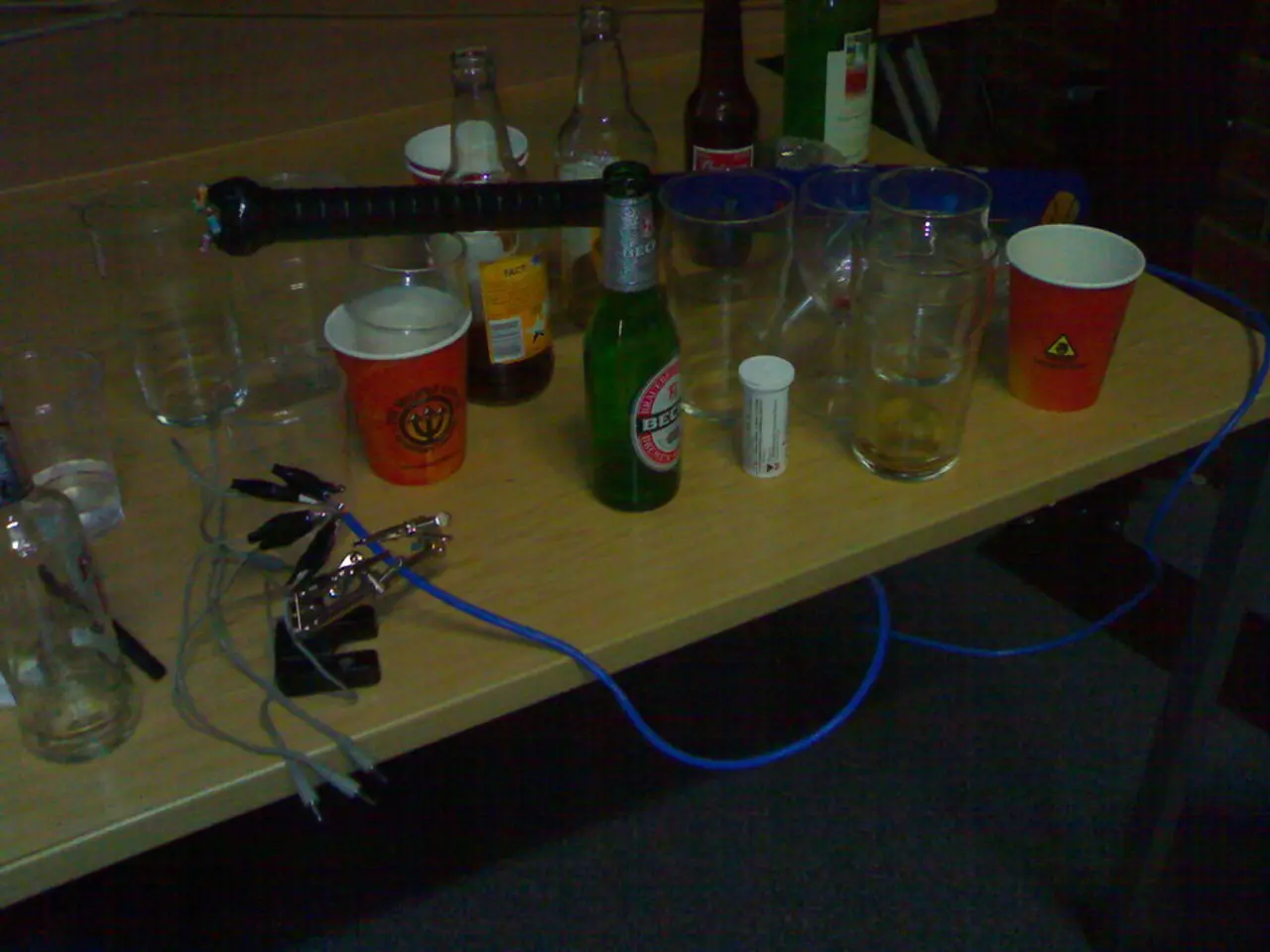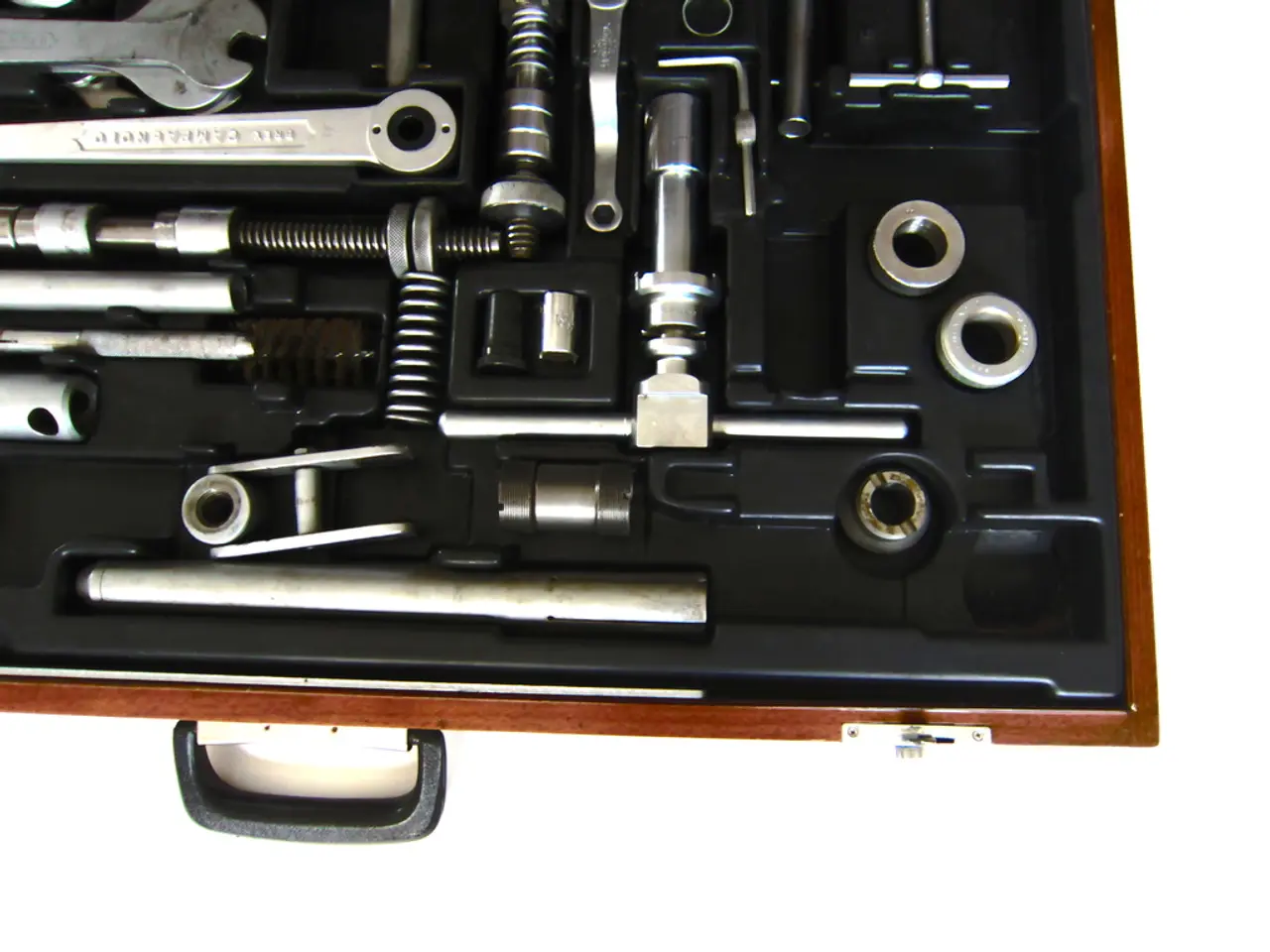Operational Mechanism of Lightsabers
In the heart of an ordinary office, around 3 p.m., hunger pangs strike. As the snack machine remains empty and the vending area devoid of alien drunks or blaster bolts to deflect, our protagonist finds an unexpected solution to their predicament.
Remembering an office lightsaber, a far cry from the standard office items, the person reaches for the glowing device. This is no ordinary lightsaber, mind you. It's a household lightsaber, a complex piece of machinery that, while not a truly functional energy weapon, serves a myriad of purposes beyond its decorative value.
The office lightsaber, in this instance, is used as a makeshift tool to spread cream cheese on a hard-to-slice bagel. The person, in a moment of desperation, attempts to use it as a substitute for a plastic butter knife, only to break three of them in the process.
Household lightsabers, as generally represented or constructed today, are primarily decorative or cosplay devices. They work by using a battery-powered LED light to simulate the glowing blade, often in a polycarbonate or similar durable plastic tube that diffuses the light. Some replicas also include sound modules to replicate the iconic hum and clash noises from Star Wars.
In practical terms, a real lightsaber like the ones in movies—featuring a plasma blade that can cut through material and stops abruptly—is not currently possible with known physics and technology. The concept of a fixed-length beam of light that halts in mid-air defies the properties of how light and energy behave. Real-world analogs, like plasma torches, exist but do not offer the compactness, controllability, or fixed shape seen in fiction.
Practical applications of household lightsabers today are mainly:
- Cosplay and themed entertainment: Serving as props for costume play and fan events.
- Collectibles and display: High-quality replicas are used as decorative items by enthusiasts.
- Light sources or night lights: Some models function as ambient or mood lighting.
- Toy and sparring devices: Safe LED sabers enable choreographed dueling and play.
Attempts to build a "functional" lightsaber at the household level generally rely on creative crafting with materials like broomsticks, LED lights, tapes, and glow-in-the-dark elements, focusing on aesthetic rather than operational energy-based weapon functionality.
Despite their limitations, household lightsabers are more than just illuminated replicas. They are highly sophisticated gadgets that, while not ready for alien bar brawls or blaster bolt deflections, can certainly help alleviate low blood sugar levels in a pinch. Just remember, voiding your warranty to reveal their internal gadgetry might not be the best idea.
In this article, we've explored the workings of a lightsaber, demystifying the plasma weapon that has transcended the boundaries of Star Wars and found its way into our daily lives, albeit in a more decorative and less destructive form.
- Despite their decorative nature, household lightsabers can sometimes serve unconventional purposes, like acting as an improvised tool for spreading cream cheese on a bagel.
- In the realm of science and technology, modern household lightsabers, although not truly functional energy weapons, can be regarded as complex gadgets, capable of functioning as cosplay props, collectibles, light sources, toys, and even potential aids for medical-conditions like low blood sugar levels.




